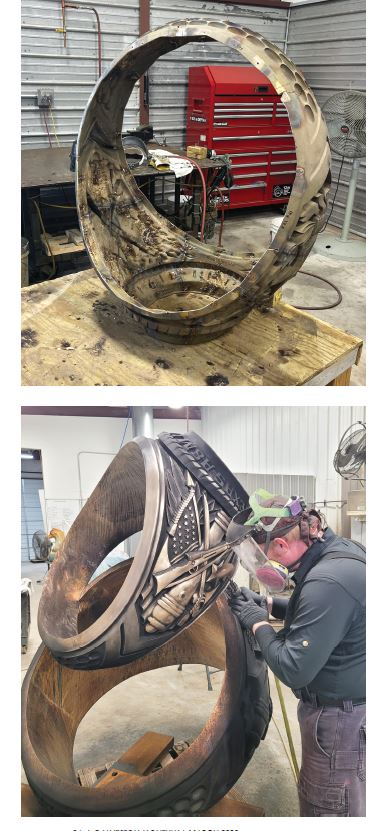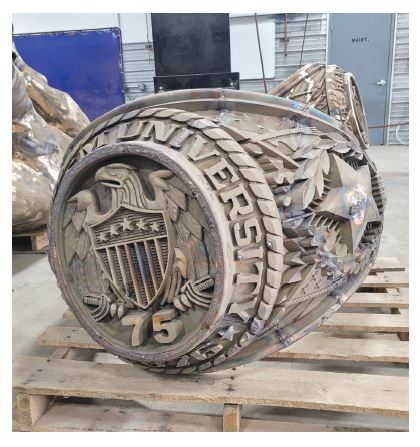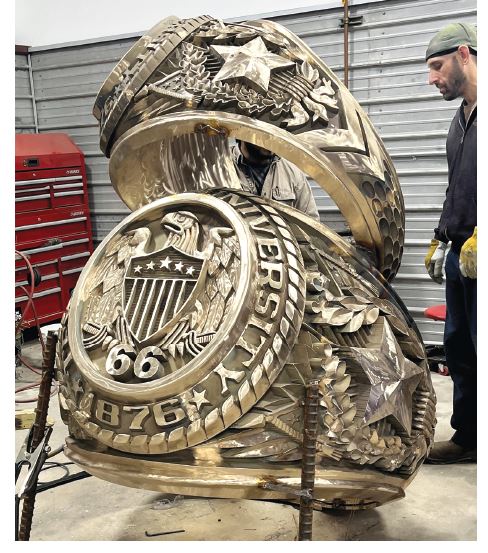Graduating from a university is an achievement that serves as a symbol of hard work and dedication, a testament to the hours of effort put into studying, completing assignments, attending lectures, participating in extracurricular activities, and making long-cherished memories.
For some, it represents an opportunity to pursue a desired career, a chance to give back to their community, or an opportunity to build new relationships and make lasting memories. For others, graduating from a particular university is something that is deeply personal to each and can be an invaluable source of motivation as they move forward in life.
 Such is the case for students or alumni of Texas A&M University, that sense of pride is as deep as the heart of Texas itself.
Such is the case for students or alumni of Texas A&M University, that sense of pride is as deep as the heart of Texas itself.
“Like any other universities, Aggies are united by our traditions and common university experiences, but it is really the dedication and commitment to living our core values - leadership, excellence, respect, integrity, loyalty, and selfless service - that really makes the Aggie Network so special,” said Rebecca Watts, executive director division of marketing & communications, Texas A&M University at Galveston.
“This is especially true of our dedication to selfless service and what sets us apart from other alumni organizations.”
The phrase “Once an Aggie, always an Aggie” is not just an expression: It’s a truism. When Aggies spot the familiar Aggie ring on the hand of a former classmate, it sparks an instant reunion. The rings all look the same, with the exception of the year which indicates the graduating class, and it serves as a symbol that unites every Aggie alumnus.
“The Aggie ring is the most visible sign of the Aggie Network and serves as an outward sign to former students everywhere of our common connection as Aggies,” she said.
“Ask any Aggie, and I guarantee they’ll have a story about connecting with a fellow Aggie because of the ring and often in the most unexpected situations.”
Nestled in the middle of the Houston-Dallas-Austin triangle and easily accessible to two-thirds of the state's population is Texas A&M University's flagship campus in College Station. It is here that a physical representation of the Aggie spirit can be found - a beloved symbol of Texas A&M University, the Aggie Ring, is faithfully represented in a 6,500-pound, 12-foot-tall bronze replica located on Haynes Ring Plaza, behind the Alumni Center.
 The ring is a replica of the actual Aggie class ring of Harold J. "Bill" Haynes, namesake of the plaza. The seal at the top of the ring bears his class year, 1946, and there's a time capsule inside to be opened in 2046.
The ring is a replica of the actual Aggie class ring of Harold J. "Bill" Haynes, namesake of the plaza. The seal at the top of the ring bears his class year, 1946, and there's a time capsule inside to be opened in 2046.
Modeled after the class ring of Harold J. Haynes, class of 1946, the 1 to 137 scale-model Aggie ring bears his class year on top and his name inscribed on the inside, and is labeled with “A&M College of Texas,” the name of the school before 1963. Haynes and his wife Reta were leading donors in the Association of Former Students’ building enhancement project in 2009.
Since its installation, the enormous bronze Aggie Ring has been a popular spot for students, alumni, and visitors alike to visit and take photos.
And now, Aggies who visit Texas A&M University at Galveston can pay homage to their alma mater at a new 8-foot replica of the iconic symbol of Aggie unity, erected in mid-February 2023, to honor the hard work of earning an Aggie degree.
The Aggie Ring, located on a black granite base in front of the Bracewell Clock Tower in the center of the Galveston campus, features the class years of the first female graduate (class of ‘75) and male graduate (class of ‘66) of Texas A&M-Galveston. A public ceremony will take place in March.
“The Aggie Ring statue complements other symbols on the campus grounds that reflect our heritage, such as the Clipper anchor outside the library.”
At a cost of $120,000, the statue has “primarily been generously funded” with gifts from donors Sue Mahoney (class of ‘94) and Patrick Mahoney (class of ‘71), and Kathey B. Huddleston (class of ‘81) and Peter D. Huddleston (class of ‘80), Watts said.
 “The Aggie Ring project was initiated in 2018 by then-Maroon Delegate president Andres Barboza, class of ’18 and vice president Deidra Dittmar, class of ’19 who were inspired by the Aggie Ring replica outside The Association of Former Students building in College Station,” said Watts.
“The Aggie Ring project was initiated in 2018 by then-Maroon Delegate president Andres Barboza, class of ’18 and vice president Deidra Dittmar, class of ’19 who were inspired by the Aggie Ring replica outside The Association of Former Students building in College Station,” said Watts.
“Barboza and Dittmar believed the Galveston Campus needed a comparable symbol to remind students what they are working toward and that they’ll soon be a member of one of the largest alumni networks in the U.S.”
Situated in a thriving maritime area, Texas A&M-Galveston offers its students a unique opportunity to experience the natural beauty of the local ecosystems.
From its picturesque campus, lined with palm trees and with the marina brimming with boats, to the number of activities students can enjoy, such as kayaking in Galveston Bay, fishing from a private dock, or simply sunbathing at Shell Beach, the university has something for everyone, Watts said.
 Texas A&M University-Galveston is the marine and maritime branch campus of the renowned university. Home to the Texas A&M Maritime Academy, it is the only state maritime academy in the southern United States and trains more than 400 cadets each year for maritime service and employment globally.
Texas A&M University-Galveston is the marine and maritime branch campus of the renowned university. Home to the Texas A&M Maritime Academy, it is the only state maritime academy in the southern United States and trains more than 400 cadets each year for maritime service and employment globally.
Boasting nearly 2,300 undergraduate and graduate students in disciplines such as science, business, engineering, liberal arts, and transportation, it is dedicated to driving the development of the blue economy in the Gulf Coast Region. As part of the university's rare land-, sea-, space-grant mission, the campus invests nearly $10 million in research annually.
Located on Pelican Island, Texas A&M-Galveston is surrounded by essential industry and environment, and is characterized by Aggies' commitment to one another and their desire to serve.
“You may hear students and former students refer to themselves as Sea Aggies, but really, we are all just Aggies here at Texas A&M-Galveston. Our degrees are issued by Texas A&M University, we honor the same traditions, and are dedicated to the same core values,” she said.
“But that doesn’t mean we don’t celebrate and embrace our island heritage; we like to say we’re all Aggies, just dunked in a little saltwater.”
For more information about Texas A&M University at Galveston and to view self-guided virtual tours of the campus, visit www.tamug.edu.
Generous Alumnus George P. Mitchell, a native of Galveston and Texas A&M alum (class of '40), is a legendary oil and gas pioneer, real estate developer and the most generous donor in Texas A&M history. In 1968, he donated 135 acres of land on Pelican Island to provide a permanent home for the Galveston campus. To recognize his generosity, the George P. Mitchell Society funds an annual undergraduate scholarship, and his statue stands at the entrance to campus.